Defining the Differences
On July 10, 1990, President George Bush signed into law the Americans with Disabilities Act (ADA), a landmark legislation that extended civil rights protection to people with disabilities. The ADA prohibits discrimination on the basis of disability in employment, state and local government services, public transportation, public accommodations, commercial facilities, and telecommunications.
ADA not only made curb cuts and wheelchair buses commonplace, it changed how playgrounds and parks are laid out and designed.
Prior to ADA, there was no guarantee that a person using a wheelchair could get to a playground. ADA is now the law, and all new and renovated parks have an accessible path that leads to the playground. Nothing can be blocking that path so that a person who is blind can know they will not run into anything.
ADA Compliant Playgrounds
ADA ushered in new play equipment. All structures (of a certain size) must have a transfer station. A transfer station is designed to enable a person using a wheelchair to transfer out of his chair on to the structure and then, if her arms are strong, she can scoot backwards to the slide and go down. The result of the transfer station is that there is an easy climbing challenge on almost every playground structure, ensuring that there is a range of challenge. The law also regulates how many play activities are up high and how many are at ground level, creating a market for ground level play equipment.
For a long time after the main ADA law was passed, the regulations for playgrounds were just guidelines. Thus, communities started to use the term “ADA Compliant Playground” to tell people which playgrounds were built with these guidelines. Now, the ADA playground guidelines are law and must be followed in all new and renovated playgrounds making this term outdated.
Accessible Playgrounds
Accessible playgrounds go beyond ADA to ensure that everyone can get to and through the playground. Accessibility is about travel, movement, and approach or entry. So a playground that is accessible is one that is easy for a person who uses a mobility device to maneuver to and around.
The elementary school playground shown above is an example of a typical accessible playground. There are ramps that enable a person using a wheelchair to get to the top of the structure. Along the route of the ramps, there are activities that are within the reach range of the person. One of the first accessible pieces of equipment that was created was a glider. The glider allows a person with a wheelchair to roll right on and then move the glider along with their friends.
Inclusive Playgrounds
An inclusive playground is one that has an aim to make it not only accessible, but to encourage and enable children to engage with one another. Ramps, in and of themselves, do not lead to engagement.
When one looks at an accessible playground, it is obvious that it was designed with people with special needs in mind. When one looks at a well-designed inclusive playground, it is not as obvious. It is designed to meet the needs of children with a variety of abilities – children who use wheelchairs, have autism, or are typically developing.
Equipment designers are redesigning equipment so that it meets the needs of anyone coming to the playground. The Unity Dome by Playworld is an example. There are many different ways to climb to the top, some easier than others. Children are encouraged through a large opening (which is large enough for a child using a wheelchair to roll through) to play on the inside. The rope climber acts as a transfer station enabling a child, who uses a wheelchair and has a strong upper core, to transfer and climb to the top. On the outside, there are sensory panels for children who are seeking a tactile or auditory experience.
In order for an inclusive playground to be successful, it needs to be accessible; however, an accessible playground is not always inclusive. The demand for inclusive playgrounds continues to grow and as a result there will be even more new pieces of inclusive playground equipment designed from which communities can choose.
More on Inclusion vs. Accessible from Mara
The words Accessible and Inclusive have in many ways become synonymous with each other when describing playgrounds. I contend, however, that an accessible playground and an inclusive playground are in actuality very different. Let’s examine these two adjectives.
Using common dictionary definitions, accessible means: “easy to approach, reach, enter, speak with or use.” The synonyms include words such as: available, reachable, attainable, operative, open, unrestricted.
Inclusive is defined as: “all encompassing, all embracing” or “covering everything or everyone.” The listed synonyms are: broad, comprehensive, all together, global, sweeping, whole.
Notice that these two words don’t share any common definitions or synonyms with each other. They are, in fact, very different words. When we use them to describe playgrounds, we should be describing two different types of environments and conditions.
An accessible playground is one where everyone can get to and through the playground. Accessibility is about travel, movement, and approach or entry. So a playground that is accessible is one that is easy for a person who uses a mobility devise to maneuver to and around. The things I would expect to see in an accessible playground are:
- no barriers at the entrance or along pathways
- ramps that lead up to upper decks
- monkey bars lowered so that they are reachable
- swing seats that have backs and arms to make them usable for people who need support
An inclusive playground is one that has an aim to make it not only accessible, but to encourage and enable children to engage with one another. Ramps and accessible swing seats in and of themselves do not lead to engagement. I believe that in order to be inclusive, a playground obviously needs to be accessible, but that an accessible playground is not always inclusive.
In the Inclusive Play Design Guide many different aspects of playgrounds are discussed, including the play richness of the environment. Although the guide lists over 50 different intents with suggestions to make your playground inclusive, working with the people at Playworld Systems, we have come up with eight keys to inclusion.
- Include all different types of play. Make sure you have a mix of physical, sensory, and social activities.
- Provide multiple challenge levels for each type of physical play.
- Make sure if you’re using module structure, that there is something for children who do not slide or climb to do on each deck or level.
- Locate comparable types of equipment in the same area; this will encourage similar play at various ability levels in close proximity.
- Put activities into pods to make the playground more manageable.
- Use unitary surfacing to make it easier for wheelchairs and strollers to enter and navigate.
- Identify the piece of equipment that children will be most excited about and ensure that this play activity is accessible and usable for all.
- Ensure that the travel routes around and through the playground and surrounding areas are wide enough for people and wheelchairs to pass.
As I discussed in a previous article, I also believe that fences and orientation paths make it much easier for children to be successful at the playground. Furthermore, desirable amenities such as seating and shade should be at every playground.
There are other terms and expressions that I have heard used to describe playgrounds for all children.
ADA Compliant Playground. Every playground that is built or refurbished today must be ADA compliant. It is the law. Therefore, this is not a term that is differentiating one new playground from another.
Universal Designed Playgrounds. Universal Design refers to a broad-spectrum solution that produces buildings, products, and environments that are usable and effective for everyone, not just people with disabilities. These playgrounds are designed using the seven design principles developed by a group of academics led by North Carolina State University. Using the principles of Universal Design is one strategy to create an inclusive playground.
Boundless Playgrounds. A Boundless Playground is a trademarked term for the organization Boundless Playgrounds, which is now managed by Playcore, Inc. A Boundless Playground requires certified pre-construction plans showing the final equipment configuration, surfacing plan, and site access. Unless the playground has received this certification, it cannot be called a Boundless Playground as it is infringing on a trademark.
I have also heard inclusive playgrounds described as “Playgrounds for all Abilities” or “Playgrounds for children with disabilities.”
“Handicapped Playgrounds,” “Handicapped-Accessible Playgrounds,” and “Wheelchair Playgrounds” are outdated terms that should not be used.

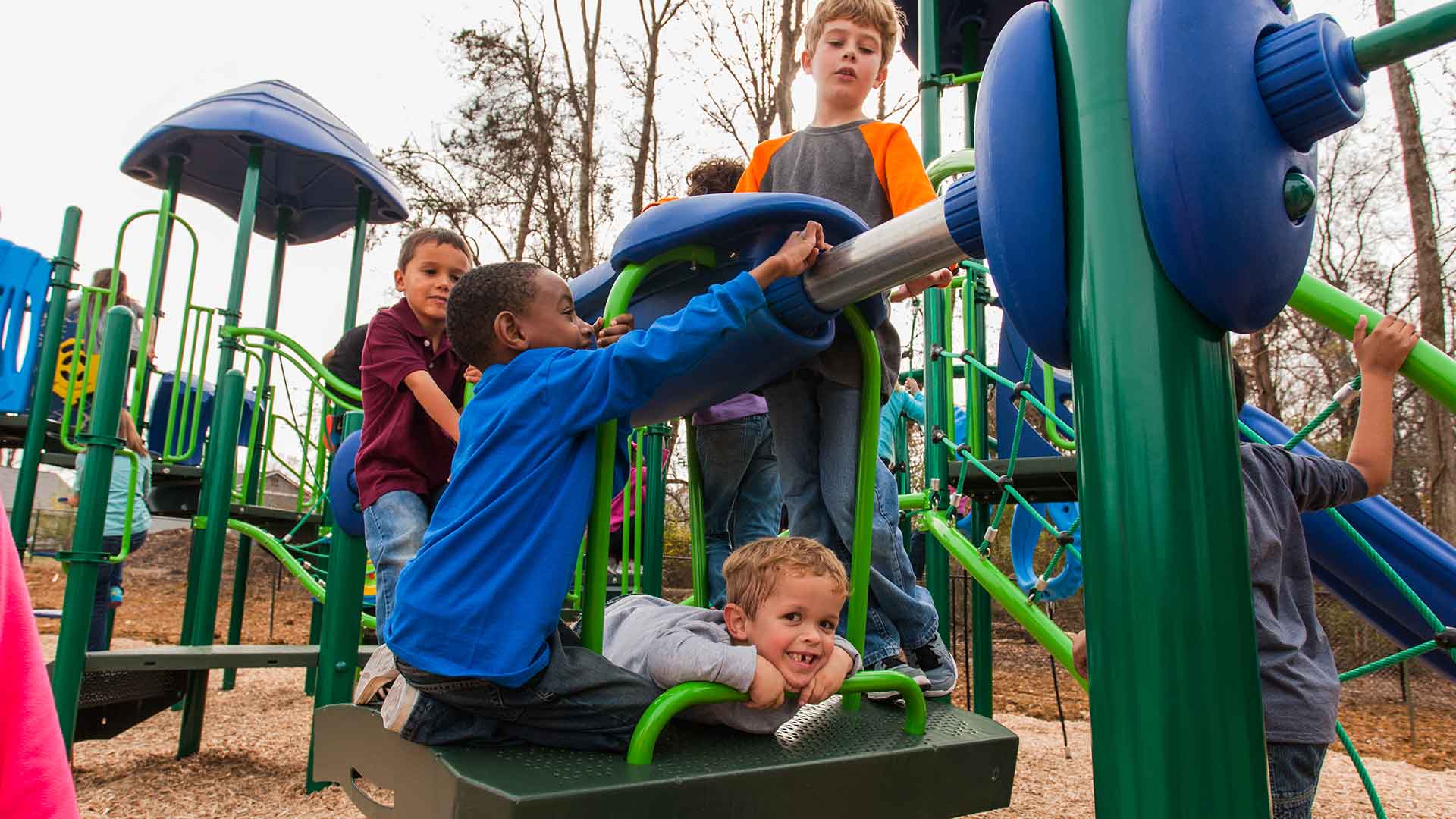

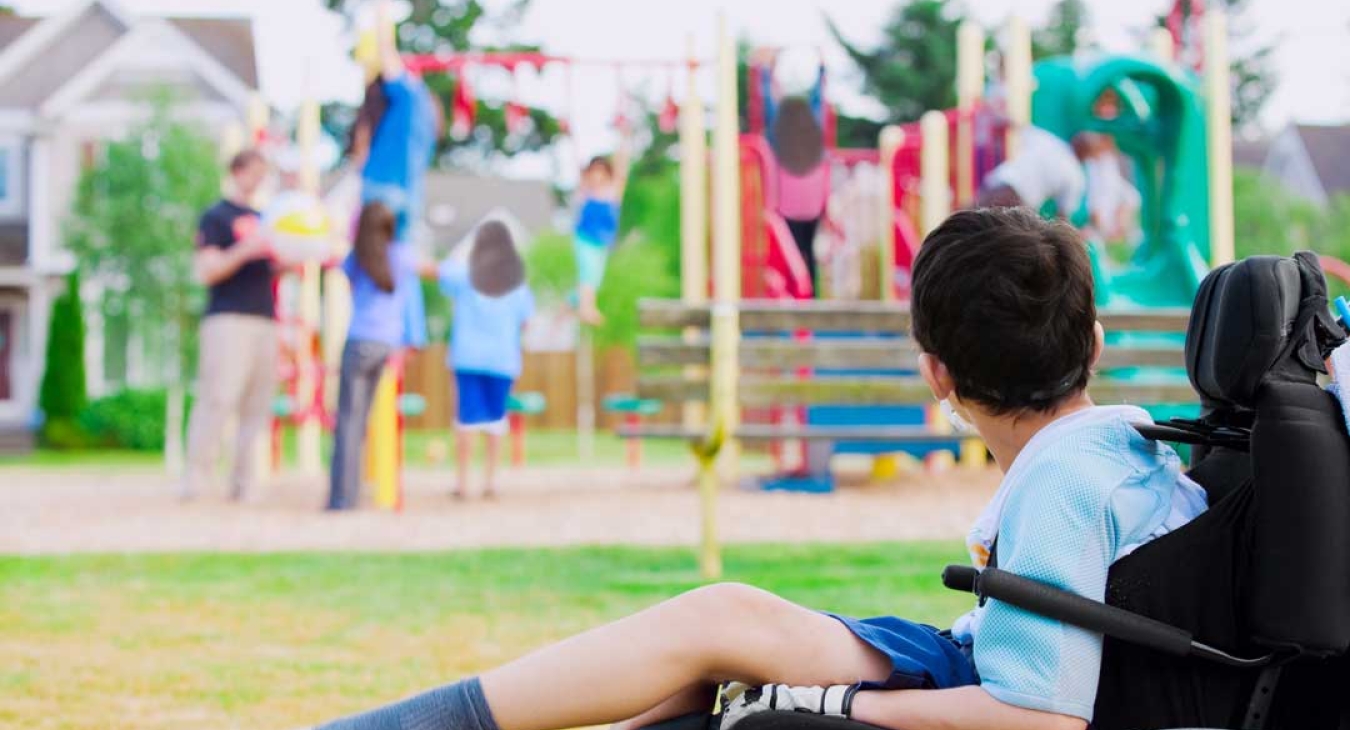
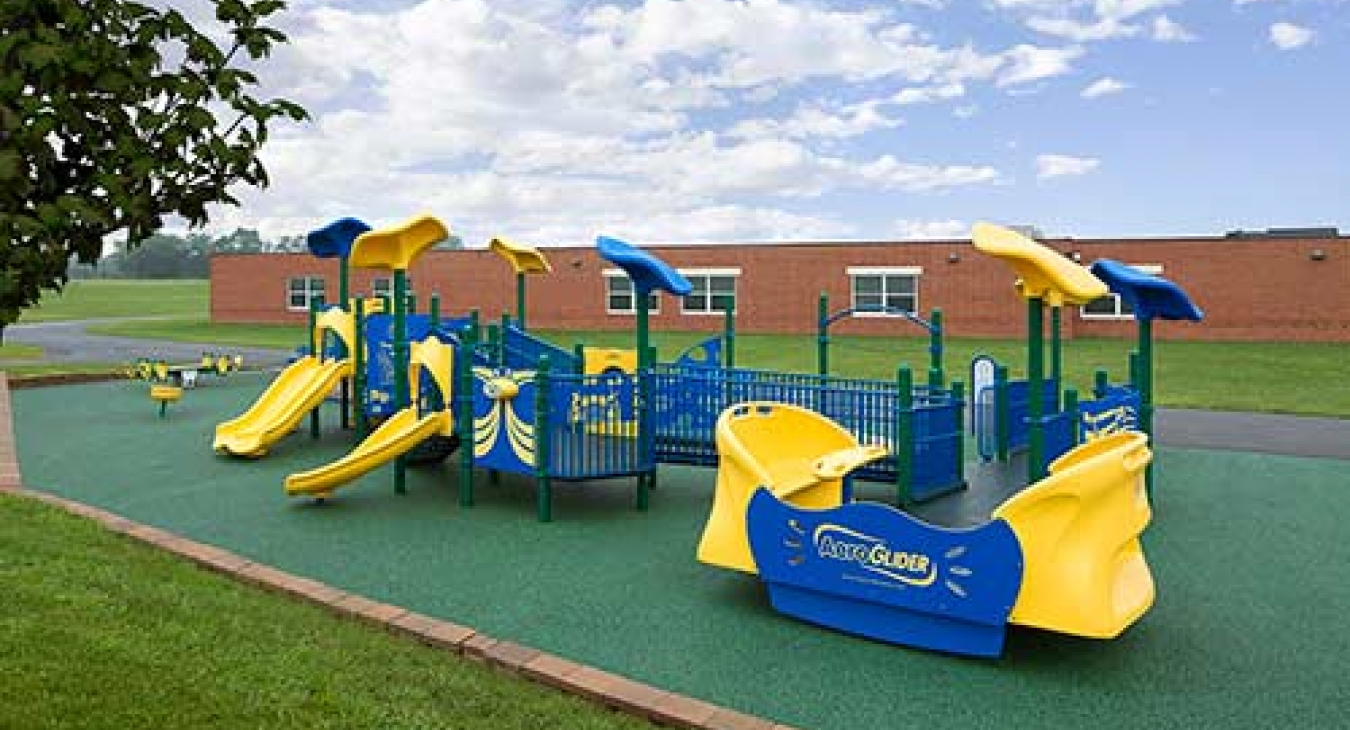
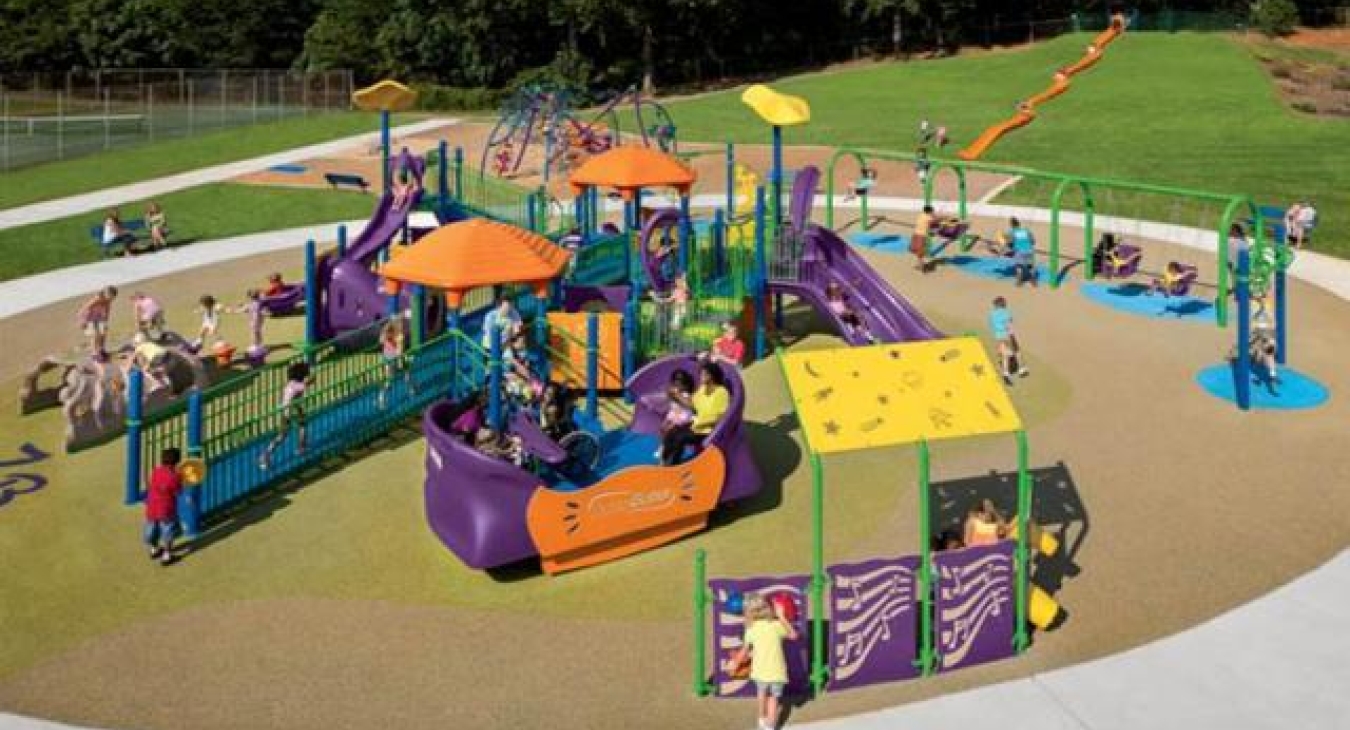
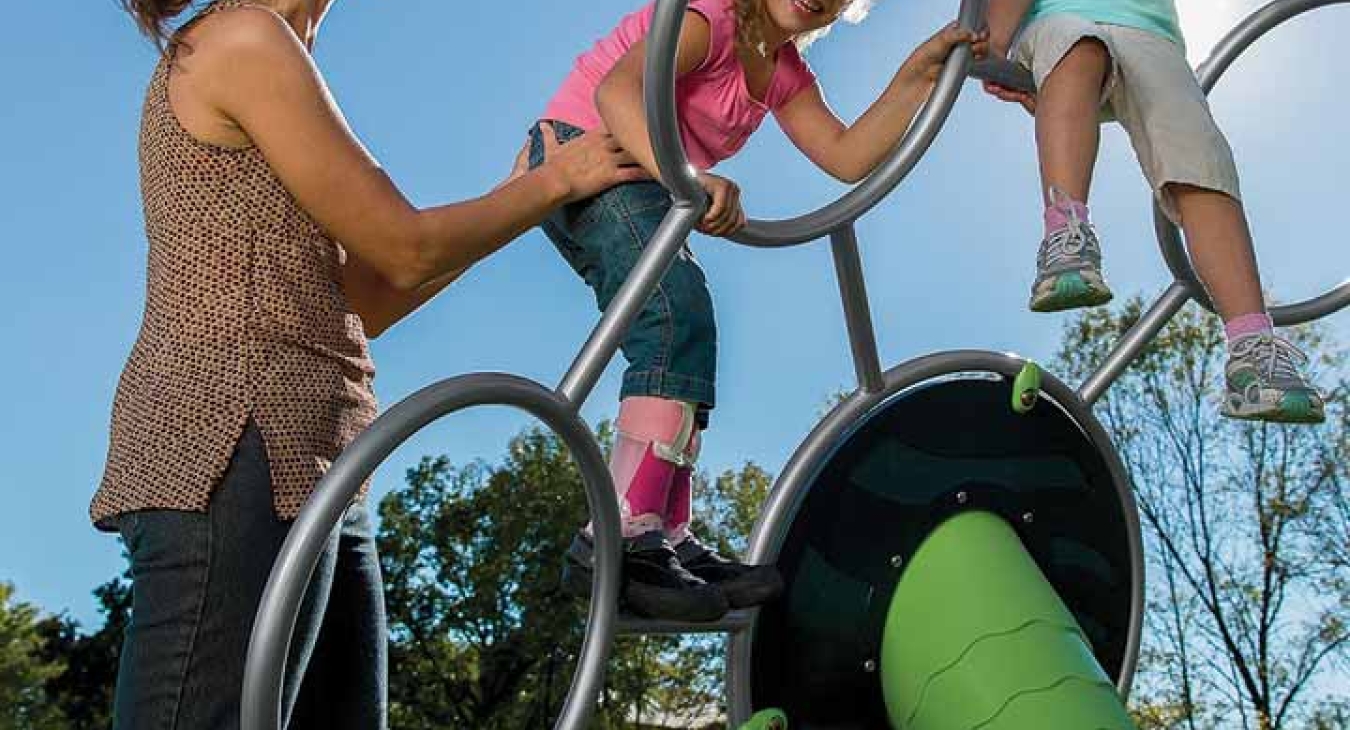
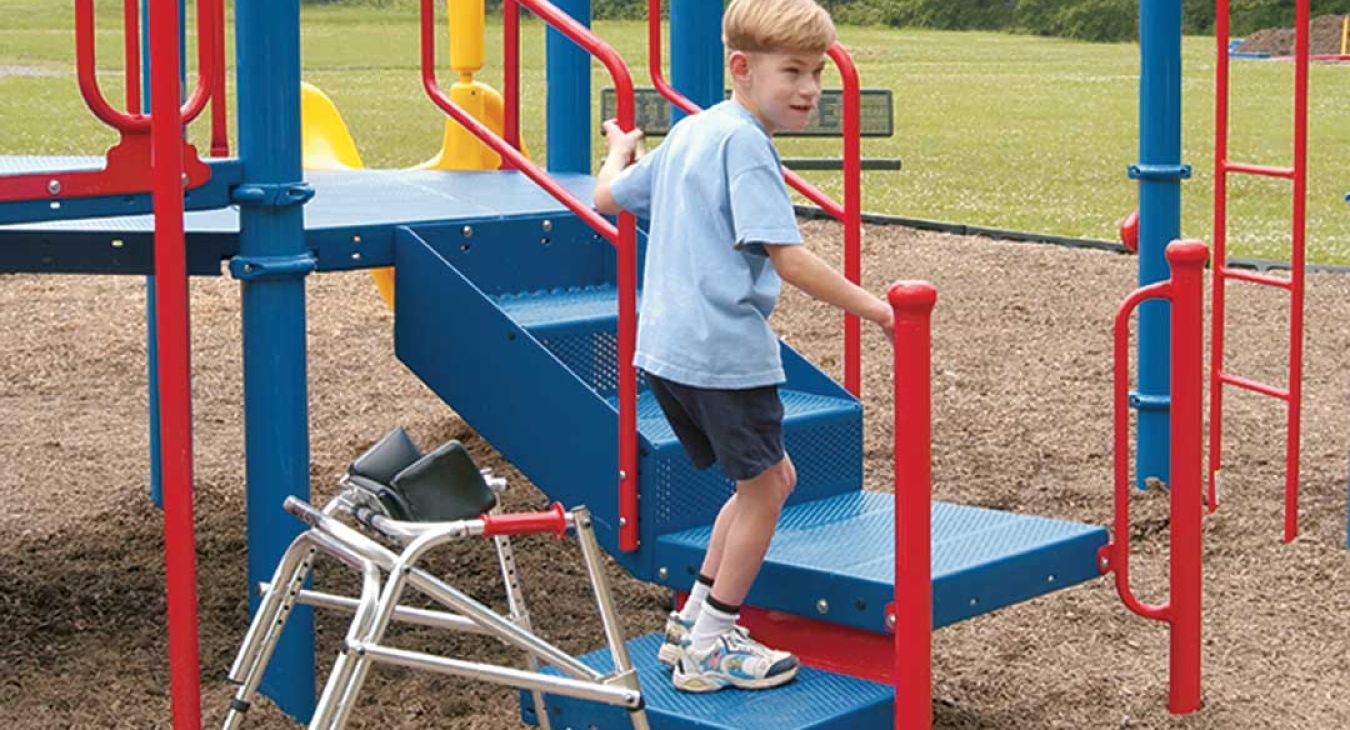
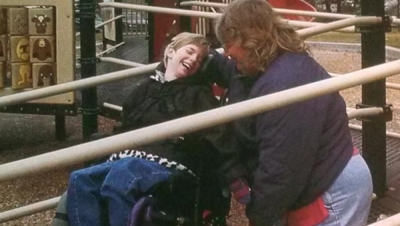

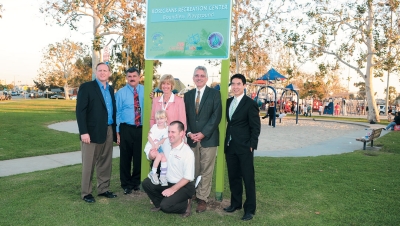


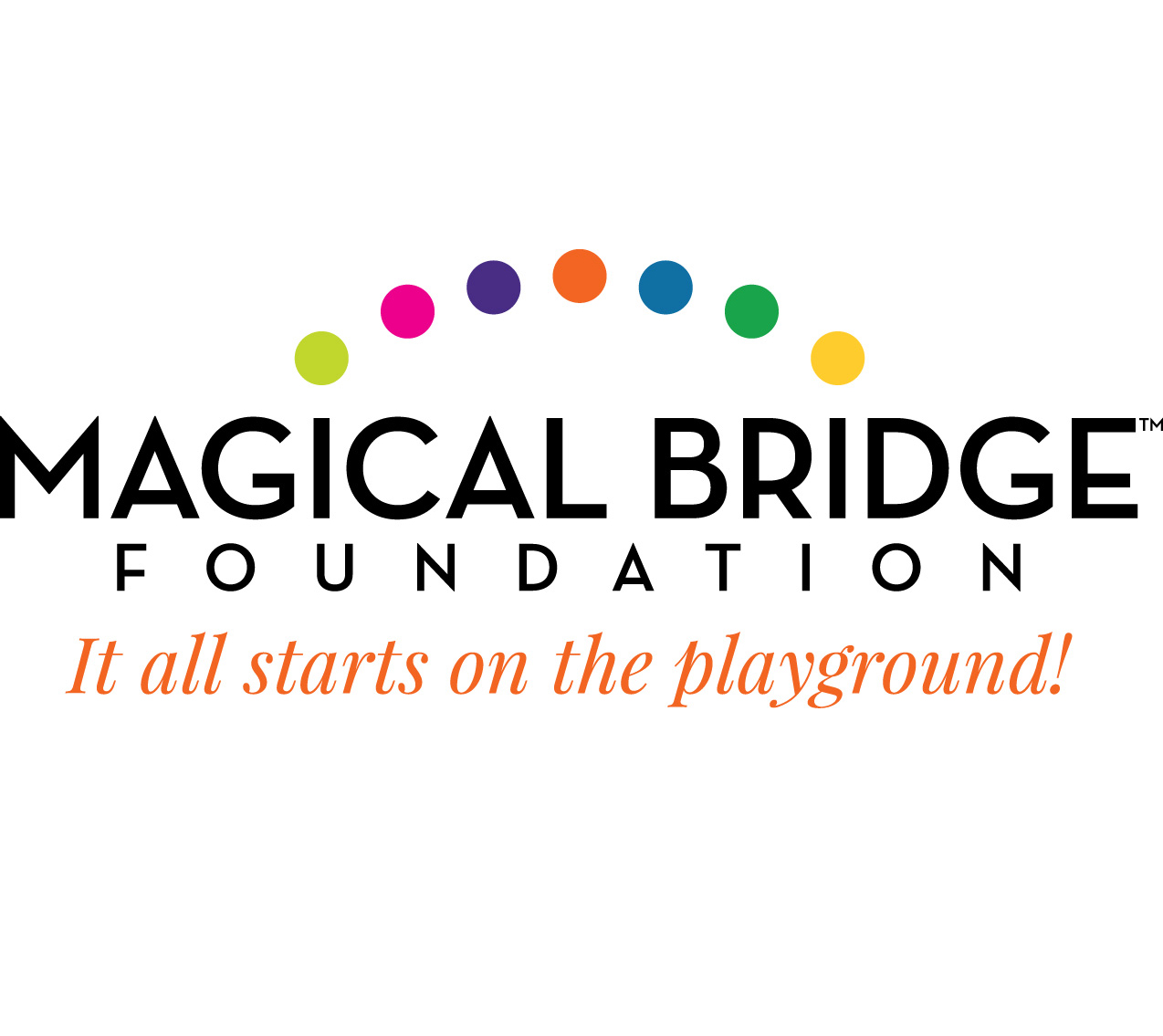




Inclusive public school playground
My granddaughter is 4 and goes to a great Elementary school. They do have a nice playground but it is gravel. She has cerebral palsy and can not walk on gravel to get to play area. Also, she and other students use wheelchair...she can't climb...so I know that playgrounds can be accessible for all students to play together. Plus it's not fair to teacher assistants to have to lift students to get to play area. So is it ada compliant to have gravel? I am researching grants but is there anything the district should do? Also, the Elementary school she goes too has the only special education classes in district. Thank you
The JennSwing and Cubby ll
This is why I designed the JennSwing for Accessibility back in 1996. There just were not any play equipment for children with special needs. Especially my granddaughter, who was developed mentally delayed. Now look at how the ADA has helped get all of this going. A big Thank You.
Comment on Inclusive versus accessible
As usual - Mara's comments and perspective are spot on....heed her advise...I would like to expand a bit. First - if you have a playground that is indeed ADA compliant - by no means should anyone be doing flips and summer-salts with excitement...all it means is that you have met the minimum standards...while that is nice and all - well - it is kinda/sorta what ya gotta do. Second - actually - all playgrounds do NOT have to be compliant...and there are exceptions...first - what is the funding source (there is this thing called Title II and Title III funding in the ADA) - so depending on the funding - it may be exempted (e.g religious entities, home owners associations, etc) - HOWEVER be advised that individual States may have a higher mandate - if they do - it trumps the Federal...and keep in mind...if the State has a lower standard - the Federal ADA trumps that. In a playground space - ages 2-5 and ages 5-12 are counted separate. There is a 50% elevated rule....if you have, for example, a climber for ages 5-12 - that has 8 elevated components - and because of Transfer Stations throughout and proper surfacing all eight are "accessible" - can could "legally" install another age 5-12 climber adjacent with ZERO accessible activities. When you do an eval - you'd count all of the elevated activities for the age group (in this case a total of 16) - 50% means you need 8 (which you already have...BUT it's imperative that the new non-ADA climber be absolutely adjacent to the existing compliant structure (meaning if you built - say 100' away in its own space, then that would mandate BOTH climbers be ADA. Bottom line - there is a difference between meeting the LETTER of the law...as well as the SPIRIT of the law....so what should one do? Just my opinion - but focus on being INCLUSIVE....that way - you get BOTH the letter...and the spirit of the law!
cool
cool
Add new comment